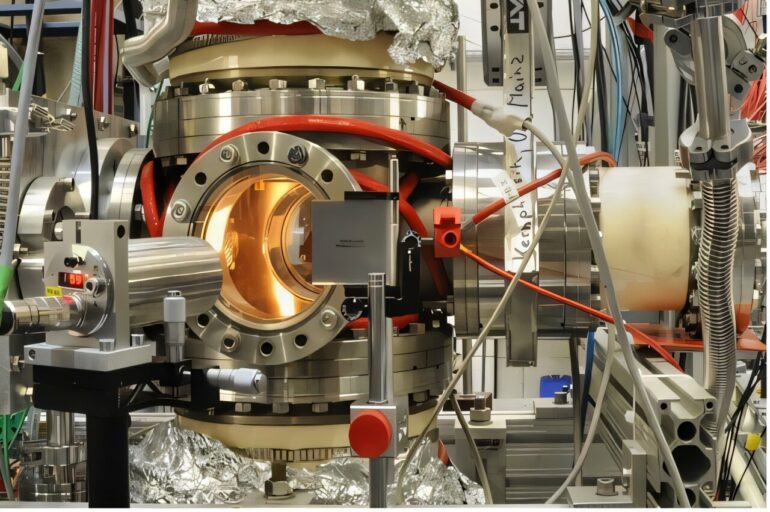University of Liverpool researchers are part of an international research collaboration that has shed light on what happens at the extremes of neutron and proton numbers, in search of where the periodic table of chemical elements ends.
In a study published in the journal Nature, the research team provide insight into the structure of atomic nuclei of fermium (element 100) and nobelium (element 102) with different numbers of neutrons.
Elements at the end of the periodic table do not occur naturally and must be produced through a combination of accelerator-driven nuclear reactions or reactor-breeding mechanisms to be studied.
Using laser spectroscopy, the team were able to measure the nuclear radius of several isotopes of nobelium and fermium.
Unlike lighter regions of the nuclear chart, where upward kinks are observed crossing shell closures, the trend across a key neutron number is shown to be smooth. This indicates that nuclear shell effects due to a few nucleons have a reduced influence as the so-called superheavy elements are approached, and the nuclei behave more like a deformed liquid drop.
Researchers from the University of Liverpool’s Department of Physics, Professor Bradley Cheal and Dr. Charlie Devlin, contributed to the nobelium experimental activities of the study.
This involved the operation of laser equipment to probe nobelium atoms and measure their atomic hyperfine structure. A key isotope was produced from the decay of lawrencium atoms that were captured from a beam of nuclear reaction products and pulse-heated off a catcher filament, resonantly ionized and then identified by their characteristic alpha decay fingerprint. The researchers’ view of the context led to the suggestion of combining the two studies into one high-impact publication to address a common theme.
Professor Cheal, who is also the co-spokesperson for the nobelium experiments, said, “A perennial question in nuclear physics is to ask what happens at the extremes of neutron and proton numbers and where the periodic table may end. This study provides new answers to this.
“Here at Liverpool, we played an important role in the nobelium experiments that form part of this study. This work combined our expertise in laser spectroscopy, a method traditionally limited to radioactive isotopes of naturally occurring elements, with a track record at specialist facilities capable of producing the heaviest elements.”
The research builds on earlier work involving Professor Cheal published in Nature in 2016, which reported laser spectroscopy being performed on nobelium for the first time.
In the intervening period, this has allowed not only studies of nuclear structure, but also the atomic structure, including a precise determination of the ionization potential of this element which has no primordial isotopes.
More information:
Jessica Warbinek et al, Smooth trends in fermium charge radii and the impact of shell effects, Nature (2024). DOI: 10.1038/s41586-024-08062-z
Provided by
University of Liverpool
Citation:
Laser spectroscopy study explores nuclear structure of fermium and nobelium isotopes (2024, November 11)



